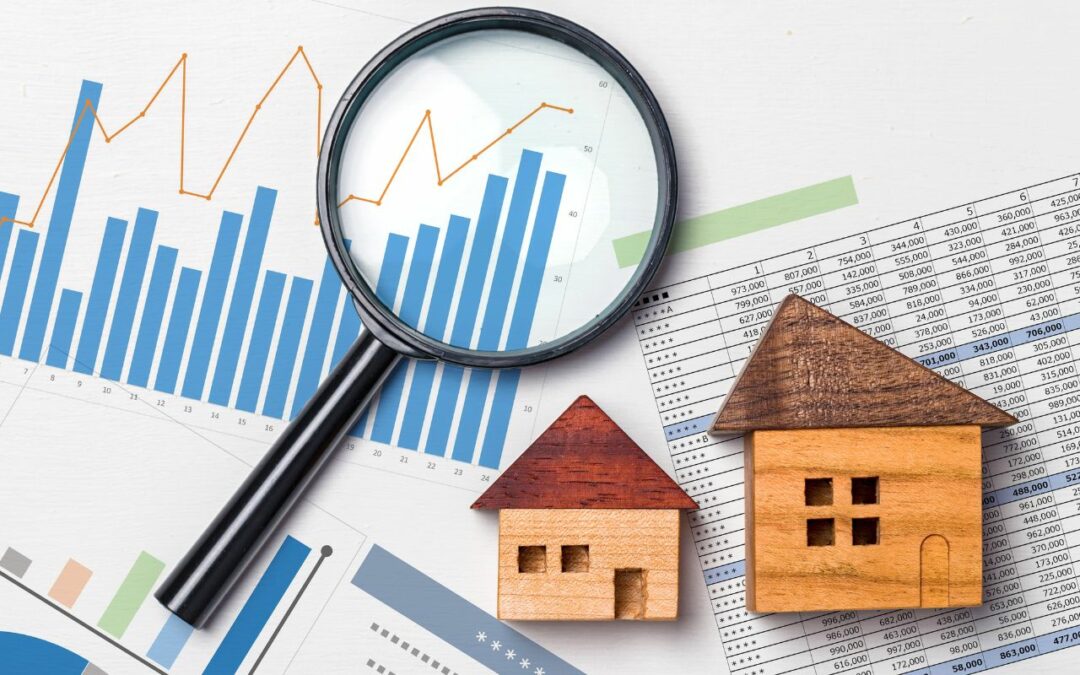When analyzing real estate markets, consider this:
Imagine a scenario where a real estate investor is looking to purchase a commercial property in a bustling city. Market demographics analysis, economic indicators evaluation, and property supply and demand assessment are just a few key techniques that can help you make informed decisions. Understanding these factors can be the difference between a successful investment and a costly mistake.
But what about the other four crucial techniques that could further enhance your market analysis skills and set you apart in the competitive real estate industry?
Key Takeaways
- Conduct thorough market demographics and economic indicators analysis.
- Evaluate property supply, demand, and local market trends.
- Utilize financial analysis for risk identification and mitigation.
- Implement strategic risk management strategies for real estate ventures.
Market Demographics Analysis
When conducting a market demographics analysis, focus on identifying key demographic trends that directly impact real estate demand and pricing. Demographic segmentation plays a crucial role in understanding the composition of the population in a particular area. By categorizing individuals based on age, income, family size, education level, and other factors, you can gain valuable insights into the preferences and needs of different demographic groups within the market. This information is essential for tailoring your real estate offerings to meet the specific demands of various segments of the population.
Market demand analysis is another critical aspect of evaluating real estate markets. By analyzing market demand, you can assess the level of interest and purchasing power of potential buyers in a particular area. Understanding the factors driving demand, such as population growth, employment opportunities, and lifestyle preferences, can help you predict future market trends and make informed decisions about property investments. By staying attuned to shifts in market demand, you can position yourself strategically to capitalize on emerging opportunities and maximize your returns in the real estate market.
Economic Indicators Evaluation
To comprehensively evaluate real estate markets, a crucial step involves analyzing economic indicators to gauge the financial health and stability of the areas under consideration. When delving into Economic Indicators Evaluation, consider the following key points:
- Inflation Rate Analysis and Employment Data Evaluation: Understanding the inflation rate trends and employment data of a region is vital. High inflation can erode purchasing power, impacting property affordability. Similarly, robust employment figures indicate a stable economy, potentially leading to increased housing demand.
- Interest Rate Impact and GDP Growth Comparison: Monitoring interest rates is crucial as they directly influence borrowing costs for real estate investments. Lower rates generally stimulate demand, while higher rates can dampen it. Additionally, comparing the GDP growth of different areas can provide insights into economic performance, helping predict future property market trends.
- Local Economic Diversification: Assessing the diversity of industries in a region can mitigate risks associated with economic downturns. A well-diversified economy is more resilient, offering stability to the real estate market even during challenging times.
Property Supply and Demand Assessment
Assessing the current balance between property supply and demand is crucial for making informed investment decisions in real estate markets. When delving into the rental market dynamics, conducting a pricing analysis can provide valuable insights. By understanding the interplay between supply and demand, investors can identify opportunities for growth and potential risks.
In analyzing property development and construction trends, it’s essential to consider how these factors influence the overall market equilibrium. Monitoring the rate of new construction relative to demand can help forecast future trends in pricing and occupancy rates. Additionally, staying informed about the types of properties being developed can offer clues about the evolving needs and preferences of tenants.
Local Market Trends Monitoring
Regularly monitoring local market trends is essential for staying ahead in the dynamic real estate industry. To effectively navigate the fluctuations and capitalize on opportunities in your local market, consider the following key aspects:
- Rental Vacancy Rates: Keeping a close eye on rental vacancy rates provides valuable insights into the demand for rental properties in your area. A decreasing vacancy rate may indicate a competitive rental market, potentially leading to higher rental income for property owners. On the other hand, a rising vacancy rate could signal oversaturation, prompting a need for strategic adjustments in pricing or marketing strategies.
- Home Price Appreciation: Tracking home price appreciation trends is crucial for understanding the overall health of the real estate market. Steady or increasing home prices generally signify a robust market with high demand. Conversely, declining home prices could indicate a cooling market or potential issues affecting property values. Monitoring these trends allows you to make informed decisions regarding property investments, pricing strategies, and timing for buying or selling properties.
- Market Competitiveness Analysis: Assessing the competitiveness of your local market involves analyzing factors such as supply and demand dynamics, pricing trends, and the presence of competing properties. Understanding the level of competition in your market can help you position your properties effectively, optimize marketing efforts, and negotiate deals more strategically. By staying attuned to these key market trends, you can better position yourself for success in the real estate industry.
Comparable Sales Analysis
When analyzing real estate markets, it’s crucial to understand the significance of Comparable Sales Analysis.
By examining sales data sources and comparing market trends, you can gain valuable insights into pricing strategies and investment opportunities.
Utilizing this method strategically can help you make informed decisions based on concrete data and market comparisons.
Sales Data Sources
Utilizing reliable sales data sources is crucial for conducting a thorough Comparable Sales Analysis in real estate market analysis. When analyzing sales data, consider the following:
- Multiple Listing Service (MLS): Access to MLS data provides detailed information on recent real estate transactions, offering insight into comparable properties’ sale prices and features.
- Public Records: Public records offer information on property sales, including sale prices, dates, and property characteristics, aiding in determining market trends and property values accurately.
- Online Real Estate Platforms: Websites like Zillow and Realtor.com provide valuable data on recent sales, active listings, and property histories, facilitating comprehensive market analysis for informed decision-making.
Market Trends Comparison
To conduct a comprehensive Comparable Sales Analysis in real estate market analysis, assess market trends through a meticulous comparison of recent sales data from reliable sources. Start by delving into market sentiment analysis to understand buyer and seller behavior trends.
Utilize data forecasting techniques to predict future market movements accurately. Evaluate pricing strategies by comparing recent sales prices with property characteristics and location. By analyzing market competition dynamics, you can gauge the level of demand and supply in the real estate market.
This comparison will provide valuable insights into the current state of the market and help you make informed decisions when buying or selling properties. Stay ahead by consistently monitoring and adapting to changing market trends.
Investment Property Performance Review
For a comprehensive evaluation of investment property performance, focus on key metrics such as rental yield, occupancy rates, and property appreciation.
- Rental Yield Analysis: Calculating the rental yield of an investment property is essential for understanding its income-generating potential. This metric, expressed as a percentage, compares the property’s annual rental income to its market value. A higher rental yield signifies a more lucrative investment opportunity, while a lower yield may require reassessment of rental rates or expenses.
- Vacancy Rates: Monitoring vacancy rates is crucial in gauging the property’s demand and overall market conditions. Low vacancy rates indicate a strong rental market with high demand, ensuring a steady income stream. Conversely, high vacancy rates may signal issues such as oversupply, pricing concerns, or undesirable location.
- Property Appreciation: Tracking the property’s appreciation over time is vital for assessing its long-term value growth. Appreciation reflects the increase in the property’s market worth, influenced by factors like location desirability, economic development, and market trends. A property with consistent appreciation is likely to provide a solid return on investment and wealth accumulation opportunities.
Risk Assessment and Mitigation Strategy
You must first employ robust risk identification methods to pinpoint potential threats in real estate investments.
Once risks are identified, focus on developing a comprehensive mitigation plan to safeguard your investment.
Risk Identification Methods
Implementing a robust risk identification methodology is crucial for effectively managing real estate market uncertainties and safeguarding investments. To enhance your risk assessment process, consider the following key techniques:
- Data Analysis: Utilize historical data and market trends to assess the probability of risks impacting your real estate investments.
- Stakeholder Engagement: Involve all relevant parties, such as investors, property managers, and market analysts, in risk identification to gather diverse perspectives and insights.
- Scenario Planning: Develop various risk scenarios based on different market conditions to evaluate potential impacts and implement proactive risk management strategies.
Mitigation Plan Development
Developing a comprehensive mitigation plan is essential for effectively addressing identified risks and ensuring the resilience of your real estate investments. To create a robust mitigation plan, begin by conducting thorough risk analysis through detailed market research.
Identify potential vulnerabilities and threats that could impact your real estate ventures. Utilize the data-driven insights gained from your risk analysis to formulate a strategic mitigation strategy that safeguards your investments.
Frequently Asked Questions
How Do Zoning Regulations Impact Real Estate Market Analysis?
When considering zoning regulations in real estate market analysis, it’s vital to understand their impact on property values, market dynamics, and economic development.
Zoning laws dictate land use, density, and permissible structures, directly influencing supply and demand.
By analyzing these regulations, you can anticipate shifts in property values, identify investment opportunities, and assess the potential for economic growth in specific areas.
Understanding zoning regulations is key to making informed real estate decisions.
What Role Do Environmental Factors Play in Evaluating a Real Estate Market?
When evaluating a real estate market, environmental factors can’t be ignored. Regulations and climate change impacts play a crucial role.
Just like a tree’s roots support its growth, understanding these factors supports your real estate decisions.
Environmental regulations can affect development potential and property values, while climate change impacts may influence long-term property viability.
How Do Technological Advancements Affect Real Estate Market Trends?
When considering how technological advancements influence real estate market trends, the Impact of AI and Virtual tours can’t be overlooked. AI streamlines processes, offering data-driven insights and predictive analytics for market forecasting.
Virtual tours enhance the buyer experience, increasing accessibility and engagement. By leveraging these tools strategically, you can stay ahead of market shifts, make informed decisions, and adapt to evolving consumer preferences in the real estate industry.
What Are the Potential Impacts of Upcoming Infrastructure Projects on Local Property Values?
As upcoming infrastructure projects pave the way for economic growth and development, local property values are set to skyrocket. The ripple effect of these initiatives will lead to property appreciation and lucrative investment opportunities for savvy individuals like yourself.
Embrace the potential windfall that awaits as these projects transform the landscape, creating a landscape ripe for financial prosperity. Stay vigilant and seize the chance to capitalize on this wave of progress.
How Does the Political Climate of an Area Influence Real Estate Market Stability?
When considering real estate market stability, political influence plays a significant role. The political climate of an area can impact property values, demand, and overall market performance.
Policies, regulations, and government decisions can create uncertainty or stability in the real estate sector. Understanding how the political landscape influences the market can help you make informed decisions and navigate potential risks or opportunities in the real estate industry.
Final Thoughts
By utilizing these key techniques for analyzing real estate markets, you can make informed decisions and maximize your investment potential.
What demographic trends are shaping the market? Are economic indicators pointing towards growth or decline?
Stay ahead of the curve by continuously monitoring local trends, assessing supply and demand, and evaluating property performance.
With a solid risk assessment and mitigation strategy in place, you can navigate the market with confidence and achieve your investment goals.














